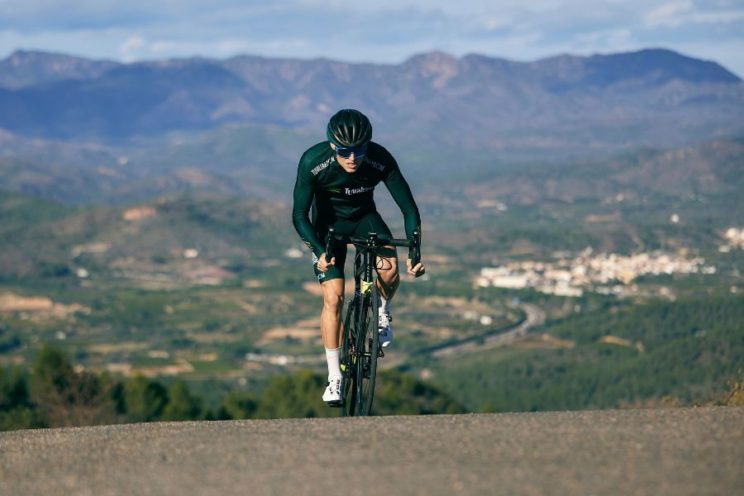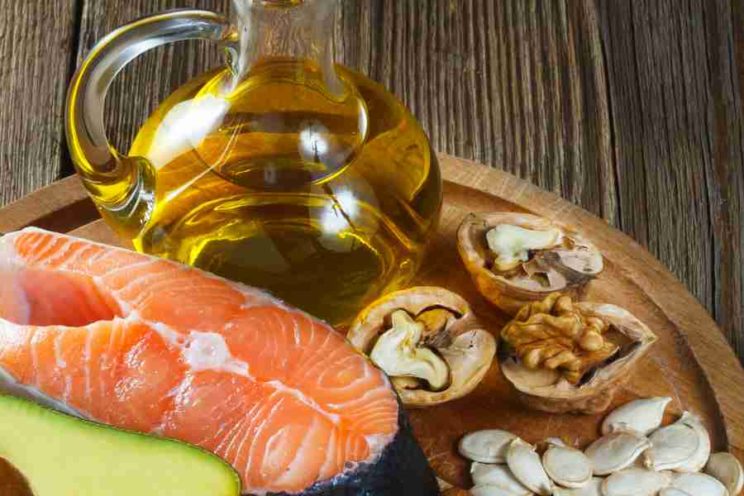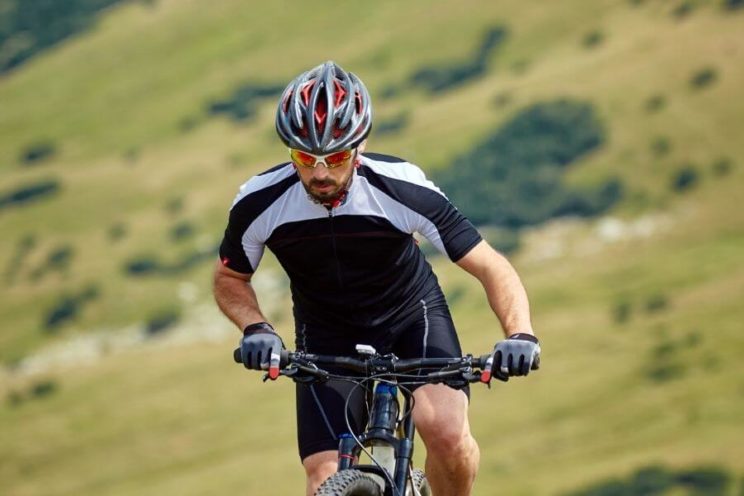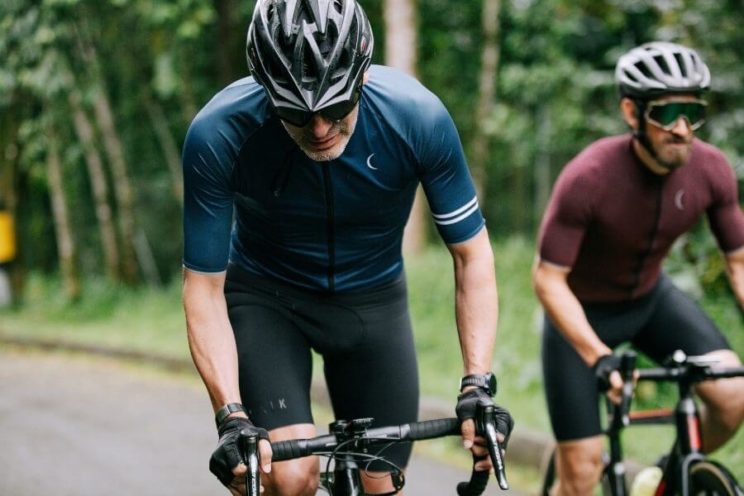How to lower weight thanks to cycling? How long should you ride a bicycle to lose the body fat you have? There are multiple reasons to go for pedals and one of them is to save a few kilos on the scale, or what is the same: lose weight.
Escaping with the bicycle requires effort, the effort requires energy and burning energy helps us lose fat. We will agree on which cycling performance and body weight goes hand in hand. Especially, when the route gets up.
It is estimated that a cyclist burns about 300 calories per hour
In walk mode; About 600-700 at a good pace and more than 1,000 calories in competition. They are approximate calculations, since here the size of the corridor, the age, the physical level, etc. comes into play here, etc. But they serve as a reference.
In the scientific field, it is estimated that losing 1 kg of body fat requires burning around 7,700 calories. Based on these data, therefore, it could be said that we need to ride a bicycle for about 11 hours to take off such ballast.
If you have all that time to go by bike during the week, congratulations. Otherwise, you can settle for losing 500 grase in seven days, which is not bad either. With pedaling 5 and a half hours, the accounts would come out.
All this, we repeat, in theory.

What is clear is that riding a bicycle is one of the best ways to burn fat during training. It is also true, why not say it, that cyclists tend to overestimate the amount of calories consumed. The better your state of form, the more efficient you will be in your training and less calories (or energy) you will consume at a certain pace.
What is the best time to consider losing weight with your training? Any time is good, but it is the basic period to take a turn in your habits, since the performance requirement is less than in full season, where changing nutritional routines can be problematic.
[IRP Posts = "8769" Name = "The importance of the basis for your next bike challenges"]
Attend to your power data
To understand the importance of weight loss in cycling, we will talk about a very widespread metric: the power-peso relationship, also known as the watt-kilo relationship. Surely it sounds to you. It is the result of dividing the watts that we are capable of maintaining (for 20 minutes) between our body weight (W/kg).
To climb faster, there are only two ways to improve this ratio. You can increase your power or reduce weight. The ideal would be to achieve both, obviously.
Let's see it with an example.
Imagine two cyclists who pedal together, elbow with side. The first cyclist weighs 70 kg and is able to move 300 watts (W). This is equivalent to a power of 4.28 w/kg (the result of dividing 300 by 70).
The second cyclist weighs 65 kg. To pedal at the time, it would be enough only to reach 279 watts (the result of multiplying 65 by 4.28). That is, 21 W less than his partner to develop the same power per kilogram. It seems little difference, but it really is
a world.
Those of us who use potentiometer know that winning 21 watts in a sustained effort of twenty minutes supposes months of training. Therefore, the alternative is to lose weight. In the case of the example, 5 kg. Nor is it so simple. Downloading on the scale too fast can involve loss of muscle mass and, therefore, of power. However, at these levels it should be somewhat marginal.
Even being an attainable objective, it is even more so if we accompany the effort of a healthy diet.

Eat to improve your performance and lose weight
Research has clearly demonstrated that weight can be lost with relative ease without exercising, but it is much more difficult to lose weight without a healthy diet. Therefore, cycling training planning must be accompanied by diet planning.
A weight loss diet does not mean eliminating food groups or simply counting calories. It is usual to find cyclists who avoid eating before or after training under the pretext of burning fat.
This way of acting goes against performance. In addition, the most normal is to end up eating in excess at some point of the day to compensate for the lack of intake.
It is preferable to program meals and avoid the loss of energy that our training requires. If, for example, you train at noon, you can divide lunch into two parts: eat half before you get into the bike and the other half at the end. You can do the same with breakfast, instead of getting stuck in tomorrow.

In general, plant three meals daily complete enough not to feel hungry or weakness between hours. Try that half of the calories come from fruits and vegetables, a quarter of carbohydrates and a quarter of lean proteins. You can enrich your diet with healthy fats, such as foods such as nuts, avocado or olive oil.
Do not forget either eating properly as long as you ride a bicycle. Especially in prolonged routes of several hours. Not only to avoid performance losses, but because you will also avoid eating in excess when you finish your training. Bars, bananas or nuts are your allies in this task. Orientatively, calculate an intake of 200-250 calories per hour. Neither do you go to the opposite end. It is important that you do not exceed the unnecessary consumption of carbohydrates, unless you really need them.
At the end, take something light to replace energies: a glass of chocolate milk with nuts, for example. And then, feed yourself as usual during the rest of the day.
In short exits, of less than an hour, you will not need much more than a water drum. From there, calculate 60-90 grams of carbohydrates every sixty minutes. Do not forget, of course, to drink a lot of water: before, during and after your routes.
[IRP posts = "9127" name = "How to train the digestive system of the cyclist"]
Train at high intensities
As your body metabolizes (or use) triglycerides and fat burning, exhale the waste product (carbon dioxide) with each breath. Too complex? Don't worry. Translating: When you breathe difficult, you are burning fat. It is what you have to be clear.
This is the reason why the sessions of short and intense efforts (also known as high -intensity intervals training or HIIT) are
burners of scientifically proven fat. Performing 30 -second series at full speed during training can help eliminate more body fat than rod of 30 to 60 minutes to moderate aerobic intensity.
Training with short and intense efforts are authentic burners of fat.
Therefore: to increase fat burning, introduce Hiit training on your tours a couple of times per week. You will notice its benefits.
To do this, it adopts a rhythm that is 70 to 90% of your maximum heart rate. Let's say it should be an effort that prevented you from maintaining a conversation while pedaling. These sessions must be brief, alternating bursts at an intense pace with low intensity pedaling intervals. You can repeat the pattern for 20-30 minutes and continue with your route normally. Fortunately, you don't have to maintain that rhythm during the entire route to make it effective.
Diversify and introduce constant changes
Do you feel that although you do not progress in your weight loss? It is quite common. Our body easily adapts to any routine. If you always make the same bicycle tours, your body will not work as hard as it would with another type of stimulus. For example, planning more varied routes, with different profiles, etc.
It's about pedaling several intensities. If you diversify efforts, you will train all your energy systems, forcing your organism below. In this way, you will avoid staging in your preparation. Think about it as a form of
cheat To your body to burn calories faster.

When alternating stronger pedaling intervals (that is, a faster cadence against greater resistance) with more comfortable rhythms, you will burn more fat than you would burn at a constant and moderate pace. Varying the rhythm and effort will also cause greater oxygen consumption after exercise, so you will continue to burn more calories for a few hours after bicycle.
Alternating stronger pedaling intervals with more comfortable rhythms allows you to burn more fat than you would burn at a constant and moderate pace.
Most of us cannot allow endless training sessions, so introducing constant changes in each of our sessions is particularly important.
Cycling practice develops some muscle. Especially, in twins and quadriceps. However, it is not enough to compensate for the general muscle loss that the body suffers over time. Losing muscle damages your metabolism complicates body weight loss and limits the energy you can apply on pedals (to burn even more calories and fat).
A good solution is to perform strength training in the gym. You can lift weights two or three days per week to develop lean muscle tissue. Not only will it make you faster and stronger on your bicycle, but will also reactivate your metabolism, so you will use more energy throughout the day.
Fast training sessions that will help you lose weight
Next, we share three training sessions to help you lose weight on the bicycle. You can do the work outdoors or on the roller, and have something in common: minimum time, maximum performance. These are three workouts (from least to greater intensity) that you can intersect in your bike output routine
conventional. As you can see, the maximum heart rate percentage that you should work in each case is defined. Therefore, a pulsometer will always be a good ally to complete them.
Session 1: Double 8
The nature of this session is designed to stimulate fat burning and increase the metabolic rate up to 24 hours after the end of training. This means that the body will continue to consume calories thanks to the effects of this training.
- Heating: 4 minutes (increasing up to 80 % intensity).
- Series of 8 repetitions: 1-10 seconds at 90 % intensity + 50 seconds at 50 % intensity.
- Recovery: 3 minutes at 50% intensity.
- Series of 8 repetitions: 2-10 seconds at 90 % intensity + 50 seconds at 50 % intensity.
- Back to calm: 5 minutes at 50% intensity.
Session 2: Training at high intensity intervals
This exercise is a little longer. It lasts 37 minutes and will burn even more calories than the first session. It is suitable for cyclists of any physical level and we guarantee that you will sweat the fat drop.
- Heating: 10 minutes at 55% intensity.
- 1: 5 minutes at 85% intensity.
- Recovery: 3 minutes at 40% intensity.
- 2: 5 minutes at 90 % intensity.
- Recovery: 3 minutes at 40% intensity.
- Effort 3: 5 minutes at 95% intensity.
- Back to calm: 6 minutes at 30-40% intensity.
Session 3: Tabata intervals
This last session is as short as demanding. It consists of eight repetitions of 20 seconds of effort to 100% of your capacity, followed by 10 seconds of recovery at 40%. The Tabata Method is a very explosive high intensity intervals training (HIIT), perfect for those who aspire to get results quickly and without investing too much time. It is a method created by the scientist Izumi Tabata and is ideal to improve in cycling disciplines such as Sprint.
[CAPTION ID = "Attachment_6529" Align = "Alignnone" Width = "744"]

Image: Munbaik - Unspash[/caption]
This session activates metabolism and burns maximum calories in a very short time, which is ideal if you exercise in eating pause or before going to work, for example. The idea is to give everything during the effort, so be sure to reach 100% of your heart rate and leave nothing in the tank.
If you want a longer session, repeat all the training after 5-10 minutes of total recovery.
Conclusion
At first glance, weight loss is a simple formula: eating less and striving more. But it is not so easy, since aspects such as mental strength come into play. Before getting to work, you should ask yourself the following questions: What is your reason to lose weight? What is the objective you pursue? Having clear answers will be key to maintaining consistency and not decaying.
A cycling session, however brief, increases your heart rate, speeds up blood circulation and stimulates caloric consumption. It is not just about losing weight, but about making cycling a tool that contributes to a healthy lifestyle.
Whether you want to lose weight and if you aspire to a state optimally to compete, the key is to continue enjoying the bicycle. And if it is in company, much better. Committing, training in a group, drastically increases the probability that you continue to persevere in improving your physical condition and in the loss of unwanted weight.
 What is clear is that riding a bicycle is one of the best ways to burn fat during training. It is also true, why not say it, that cyclists tend to overestimate the amount of calories consumed. The better your state of form, the more efficient you will be in your training and less calories (or energy) you will consume at a certain pace.
What is the best time to consider losing weight with your training? Any time is good, but it is the basic period to take a turn in your habits, since the performance requirement is less than in full season, where changing nutritional routines can be problematic.
[IRP Posts = "8769" Name = "The importance of the basis for your next bike challenges"]
What is clear is that riding a bicycle is one of the best ways to burn fat during training. It is also true, why not say it, that cyclists tend to overestimate the amount of calories consumed. The better your state of form, the more efficient you will be in your training and less calories (or energy) you will consume at a certain pace.
What is the best time to consider losing weight with your training? Any time is good, but it is the basic period to take a turn in your habits, since the performance requirement is less than in full season, where changing nutritional routines can be problematic.
[IRP Posts = "8769" Name = "The importance of the basis for your next bike challenges"]

 In general, plant three meals daily complete enough not to feel hungry or weakness between hours. Try that half of the calories come from fruits and vegetables, a quarter of carbohydrates and a quarter of lean proteins. You can enrich your diet with healthy fats, such as foods such as nuts, avocado or olive oil.
Do not forget either eating properly as long as you ride a bicycle. Especially in prolonged routes of several hours. Not only to avoid performance losses, but because you will also avoid eating in excess when you finish your training. Bars, bananas or nuts are your allies in this task. Orientatively, calculate an intake of 200-250 calories per hour. Neither do you go to the opposite end. It is important that you do not exceed the unnecessary consumption of carbohydrates, unless you really need them.
At the end, take something light to replace energies: a glass of chocolate milk with nuts, for example. And then, feed yourself as usual during the rest of the day.
In short exits, of less than an hour, you will not need much more than a water drum. From there, calculate 60-90 grams of carbohydrates every sixty minutes. Do not forget, of course, to drink a lot of water: before, during and after your routes.
[IRP posts = "9127" name = "How to train the digestive system of the cyclist"]
In general, plant three meals daily complete enough not to feel hungry or weakness between hours. Try that half of the calories come from fruits and vegetables, a quarter of carbohydrates and a quarter of lean proteins. You can enrich your diet with healthy fats, such as foods such as nuts, avocado or olive oil.
Do not forget either eating properly as long as you ride a bicycle. Especially in prolonged routes of several hours. Not only to avoid performance losses, but because you will also avoid eating in excess when you finish your training. Bars, bananas or nuts are your allies in this task. Orientatively, calculate an intake of 200-250 calories per hour. Neither do you go to the opposite end. It is important that you do not exceed the unnecessary consumption of carbohydrates, unless you really need them.
At the end, take something light to replace energies: a glass of chocolate milk with nuts, for example. And then, feed yourself as usual during the rest of the day.
In short exits, of less than an hour, you will not need much more than a water drum. From there, calculate 60-90 grams of carbohydrates every sixty minutes. Do not forget, of course, to drink a lot of water: before, during and after your routes.
[IRP posts = "9127" name = "How to train the digestive system of the cyclist"]
 When alternating stronger pedaling intervals (that is, a faster cadence against greater resistance) with more comfortable rhythms, you will burn more fat than you would burn at a constant and moderate pace. Varying the rhythm and effort will also cause greater oxygen consumption after exercise, so you will continue to burn more calories for a few hours after bicycle.
When alternating stronger pedaling intervals (that is, a faster cadence against greater resistance) with more comfortable rhythms, you will burn more fat than you would burn at a constant and moderate pace. Varying the rhythm and effort will also cause greater oxygen consumption after exercise, so you will continue to burn more calories for a few hours after bicycle.
 Image: Munbaik - Unspash[/caption]
This session activates metabolism and burns maximum calories in a very short time, which is ideal if you exercise in eating pause or before going to work, for example. The idea is to give everything during the effort, so be sure to reach 100% of your heart rate and leave nothing in the tank.
If you want a longer session, repeat all the training after 5-10 minutes of total recovery.
Image: Munbaik - Unspash[/caption]
This session activates metabolism and burns maximum calories in a very short time, which is ideal if you exercise in eating pause or before going to work, for example. The idea is to give everything during the effort, so be sure to reach 100% of your heart rate and leave nothing in the tank.
If you want a longer session, repeat all the training after 5-10 minutes of total recovery.












